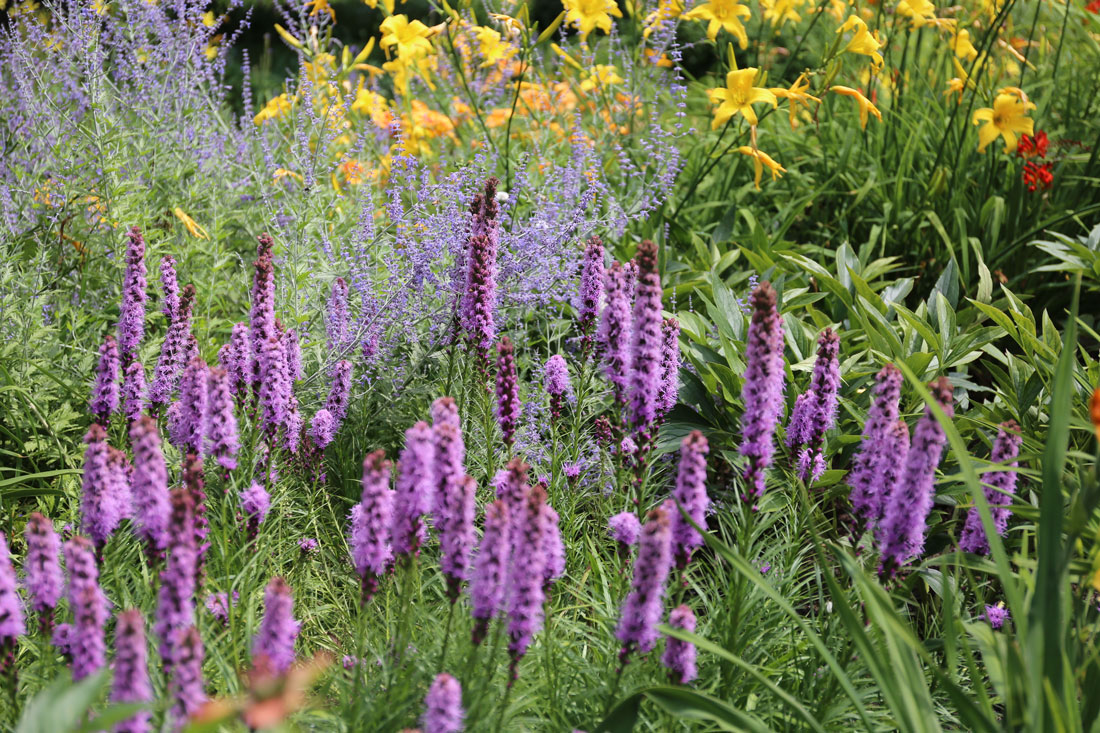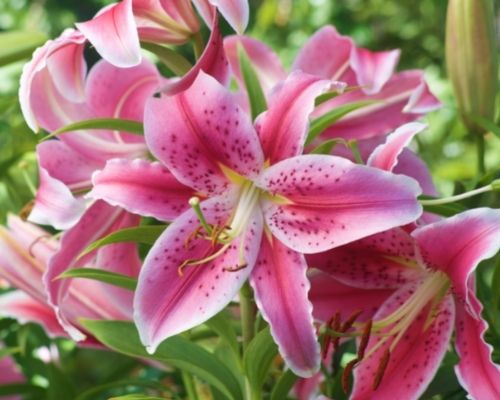Planning, Planting and All-Season Care
If you're a beginning gardener, peering in through the garden gate, it’s easy to feel intimidated. How do you know which plants to buy and how many to get? How do you know when they will bloom and how long they will live?
Take heart. Even the most celebrated gardeners were once beginners. And truth be told, gardening is not a pursuit you can ever master. It’s a life-long adventure that’s part art, part science and part mystery. The key to becoming a good gardener is to garden and here’s how to get started:
SELECT AND PREPARE A PLANTING AREA
Size. Resist the temptation to make your first garden bigger than you can manage. The best way to be successful is to start relatively small. Your garden will look better and grow better if you can stay on top of weeding, watering and deadheading. A space that’s 2 or 3 feet deep and 4 to 6 feet long will give you plenty of opportunities to experiment.
Sun/Shade. More sun means more flowers, so the best spot for a flower garden is somewhere that will get at least 6 hours of sun per day. Once you have a location in mind, watch how the sun hits that part of the yard over the course of the day. Is it shaded by trees or a nearby fence or building? Keep in mind that the angle of the sun changes over the course of the summer and is at its highest in late June.
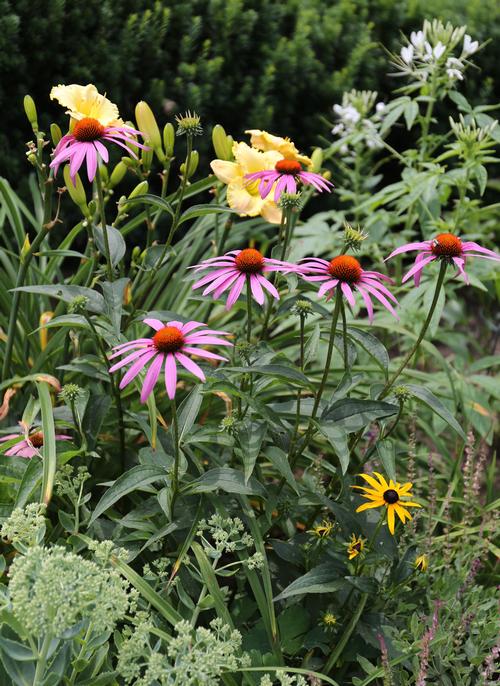
Soil. Hardly anyone starts off with great garden soil. Over time, you and your plants can work together to improve it. But poor drainage is one soil problem that can’t be overcome. Soggy soil forces air out of the soil and will stress or kill a plant’s root system. In well-drained soil, rain water percolates down into the root zone and does not collect near the surface.
There are a couple ways to deal with poorly drained soil. You can create drainage swales to draw water away from the planting area. Raising the soil level by 6 to 8” (by mounding the soil or installing a raised bed) will also help.
If you are preparing your new garden in the spring, don’t start too early. Wait until the soil is dry enough to fall apart when you squeeze it into a ball. Digging soil that’s too wet can ruin the soil structure and create hard clumps that are difficult to break apart.
For a brand new area, start by removing sod, weeds and any large rocks, and then use a shovel or garden fork to loosen the soil at least 12” deep. Spread 2 to 4” of compost over the entire area, (the more the better) and mix it into the top 6”. This is also a good time to incorporate an organic, all-purpose granular fertilizer, following the application rates on the package. When you’re done, rake the area smooth and it’s ready for planting.

PLAN YOUR GARDEN AND CHOOSE THE PLANTS
As a beginning gardener, you don't need to go for a specific color scheme or garden style. Your first priority should be to have a nice collection of healthy plants that give you lots of color and make you happy.
Start by making a list of the plants you already have or are pretty sure you want to buy. Though it’s tempting to include dozens of different kinds of plants, limiting yourself to just a few will make your garden look neater and more pulled together. Do include plants with different heights (short, medium and tall) and different bloom times (early, mid and late summer). Always check to make sure they will be winter hardy in your growing zone. If you don’t know your growing zone, you can find it HERE.

Perennial gardens often include a few annuals for all season color. Most perennials have a specific bloom time (peonies in late spring, mums in late summer), while most annuals (zinnias, impatiens, cosmos, cleome) bloom consistently from summer through fall.
Bulbs have an important role to play in any flower garden. Fall-planted bulbs (tulips, daffodils, alliums) bloom in the spring, long before other plants start flowering. Spring-planted bulbs (dahlias, cannas) begin blooming in midsummer and are at their best in late summer and fall when many other flowering plants are starting to fade.
- Easy perennials for beginners: rudbeckia, echinacea, daylilies, sedum, peonies, astilbe, hosta, lamb’s ears
- Easy annuals for beginners: zinnias, petunias, alyssum, cosmos, coleus, marigolds, nasturtiums, sunflowers
- Easy bulbs for beginners: daffodils, tulips, muscari, alliums, dahlias, cannas, liatris
Once you have your plant list, make a simple planting map, locating tall plants in back and shorter ones in front.
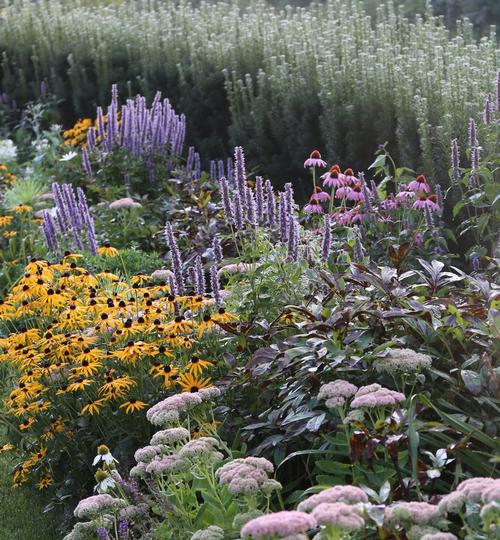
PLANT YOUR GARDEN
Transplanting is stressful on plants, especially if it’s sunny, windy or hot. For best results, plant your garden on a cloudy or rainy day when the wind is calm. After transplanting, it takes plants 3 to 4 weeks to establish new “feeder” roots that allow them to absorb water and nutrients. During this time, they are vulnerable to sunburn and drying out. You can ease the transition by covering new plants with garden fabric to shield them from sun and drying winds.
Assuming the soil has already been well prepared (see above), bring your planting map out to the garden and place your plants on the soil surface where they will be located. Try not to step in the garden to avoid compacting the soil. Once the plants are in their proper place, dig a generous hole for each plant, that’s about two times the size of the root ball. If you are planting bare root plants or bulbs, follow instructions on the package for planting depth.
Gently ease the potted plant out of its pots and set it into the center of the planting hole. If necessary, mound up the soil so the plant sits at the same level in the garden as it did in the pot. Refill the hole, lightly pressing soil around the roots so there are no big air pockets. When you have finished planting, water slowly and deeply so moisture reaches all the way down into the root zone.
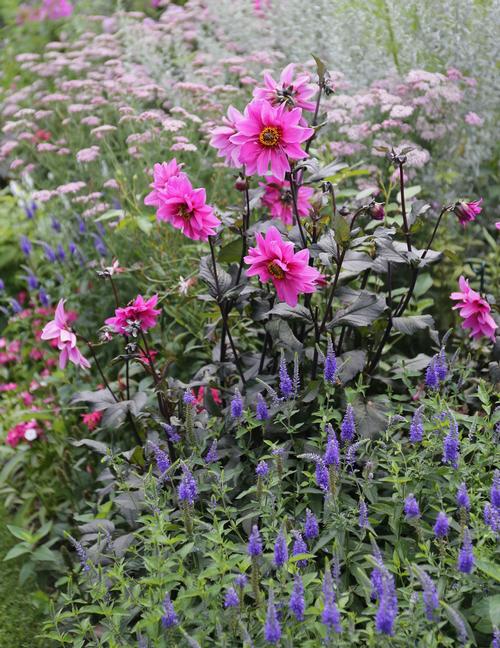
WHAT TO EXPECT FROM YOUR NEW FLOWER GARDEN
During the first growing season, focus on keeping your plants healthy and getting to know their habits.
Most perennials flower just once each summer, at a certain time during the growing season. Lupines and peonies, for example, bloom only in early summer. Asters and ornamental grasses bloom only in late summer. This is why it’s good to choose perennials with different bloom times.
Expect newly planted perennials to take at least a full year to settle in. Some, like peonies and clematis, can take 2 or 3 years to mature. Bare root perennials start more slowly than potted plants but usually catch up by the end of the first growing season.
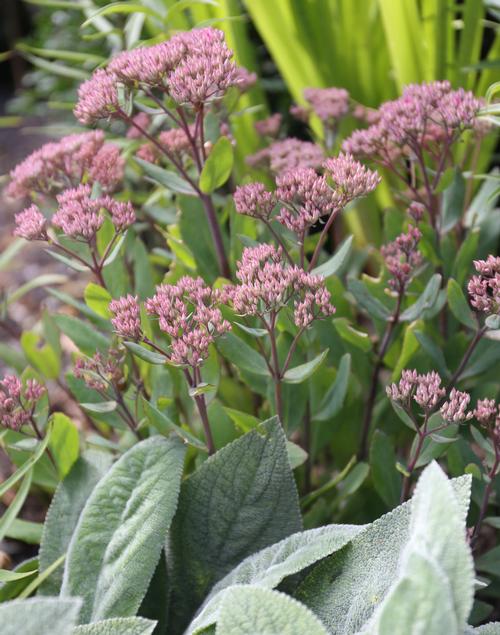
Annuals grow quickly and will make your garden look full while the perennials are getting established. Most annuals begin blooming in early summer and continue until late summer – as long as you keep them watered and fertilized, and remove the spent flowers.
Fall-planted flower bulbs such as tulips and daffodils will bloom the next spring. Some will perennialize and return year after year (daffodils, crocus) and others should be treated as annuals and be replanted each fall (tulips).
Spring-planted, summer-blooming bulbs such as dahlias, cannas and gladiolus are usually treated as annuals, while cold-tolerant liatris and crocosmia usually perform like perennials.
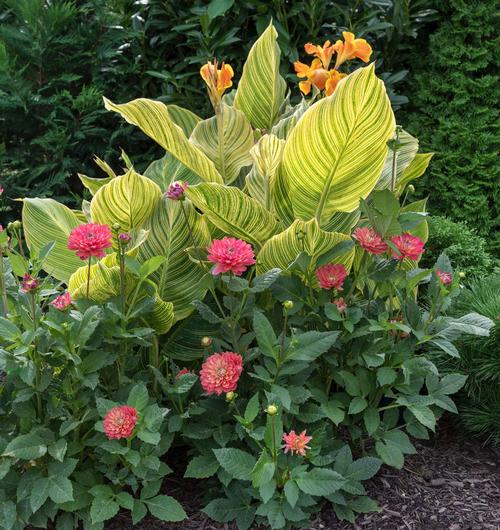
CARING FOR YOUR FLOWER GARDEN
During the growing season, you’ll want to spend plenty of time getting to know your new plants. You’ll also need to do some watering, weeding, mulching, fertilizing and deadheading.
Watering. An established perennial garden rarely needs watering, especially if you choose plants that are well adapted to your climate. But during the first growing season, you will need to make sure they don’t dry out. Depending on the weather, you may need to water once or even twice a week. Keeping the soil surface mulched will minimize moisture loss.
Weeding. The first year of a new garden is the weediest. Turning the soil brings dormant weed seeds up to the surface where they can germinate. Try to weed your garden a little every week, all summer long. Preventing new weeds from going to seed will reduce your weeding chores in future years.
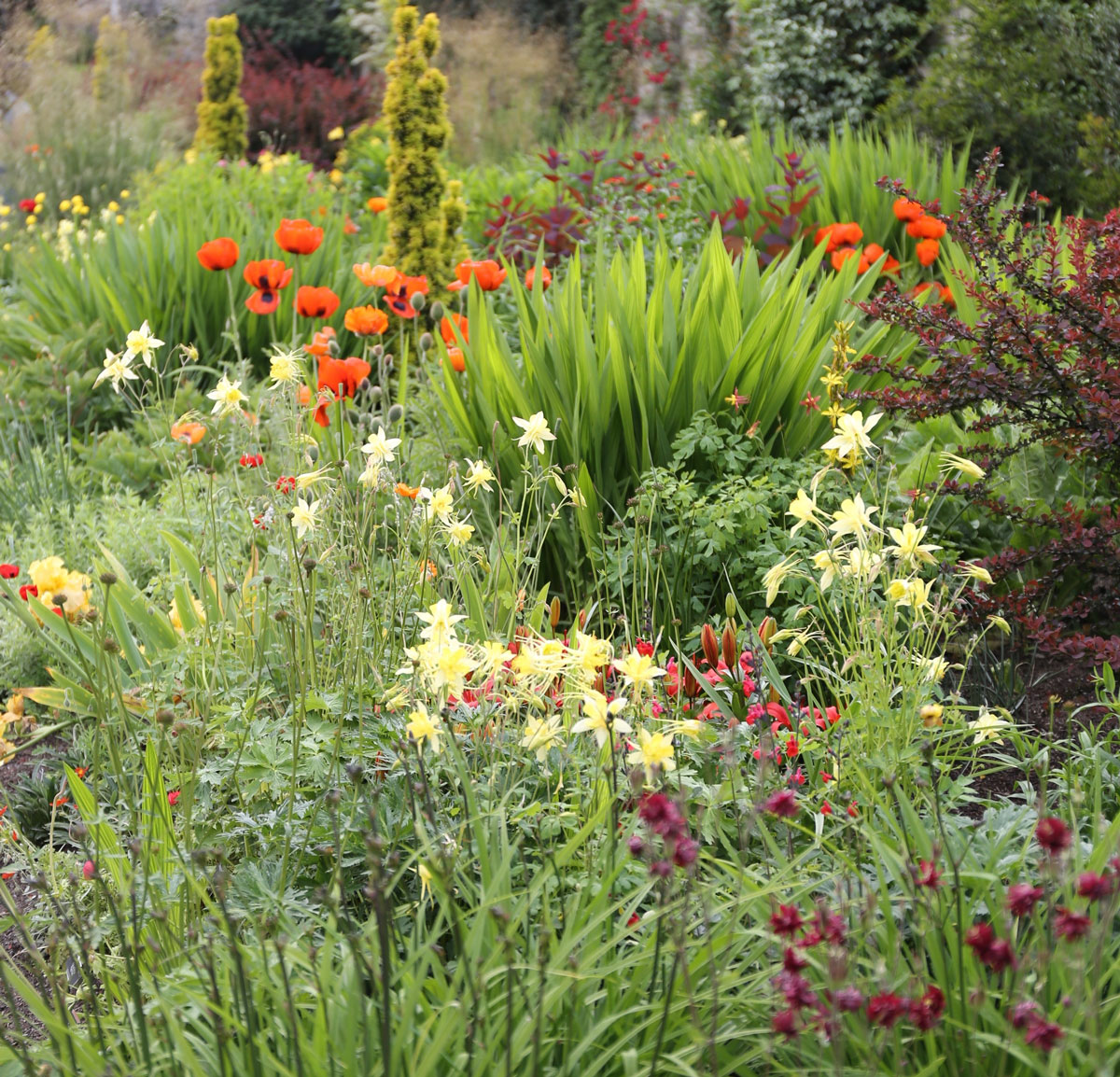
Mulching. Covering the soil surface with mulch will discourage new weeds from germinating and make those that do easier to pull out. Two inches of compost or shredded leaves is an ideal mulch for annuals and perennials. Generally, it’s good to avoid bark chips and shredded bark as they rob nitrogen from the soil.
Fertilizing. Annuals benefit from being fertilized once a month, with a liquid, all-purpose fertilizer. Feed perennials twice during their first summer, starting a month after planting and then again in early July. In future years, fertilize your perennials once in early spring, using a combination of compost and granular all-purpose fertilizer.
Deadheading. Once a plant has successfully set seed, it will usually slow down or completely stop flowering. If you cut off the flowers as soon as they are spent, you prevent the plant from producing seed and encourage it to continue sending out new flowers. Cutting plants back after they bloom will also keep your garden looking neater and help to discourage disease and pest problems.
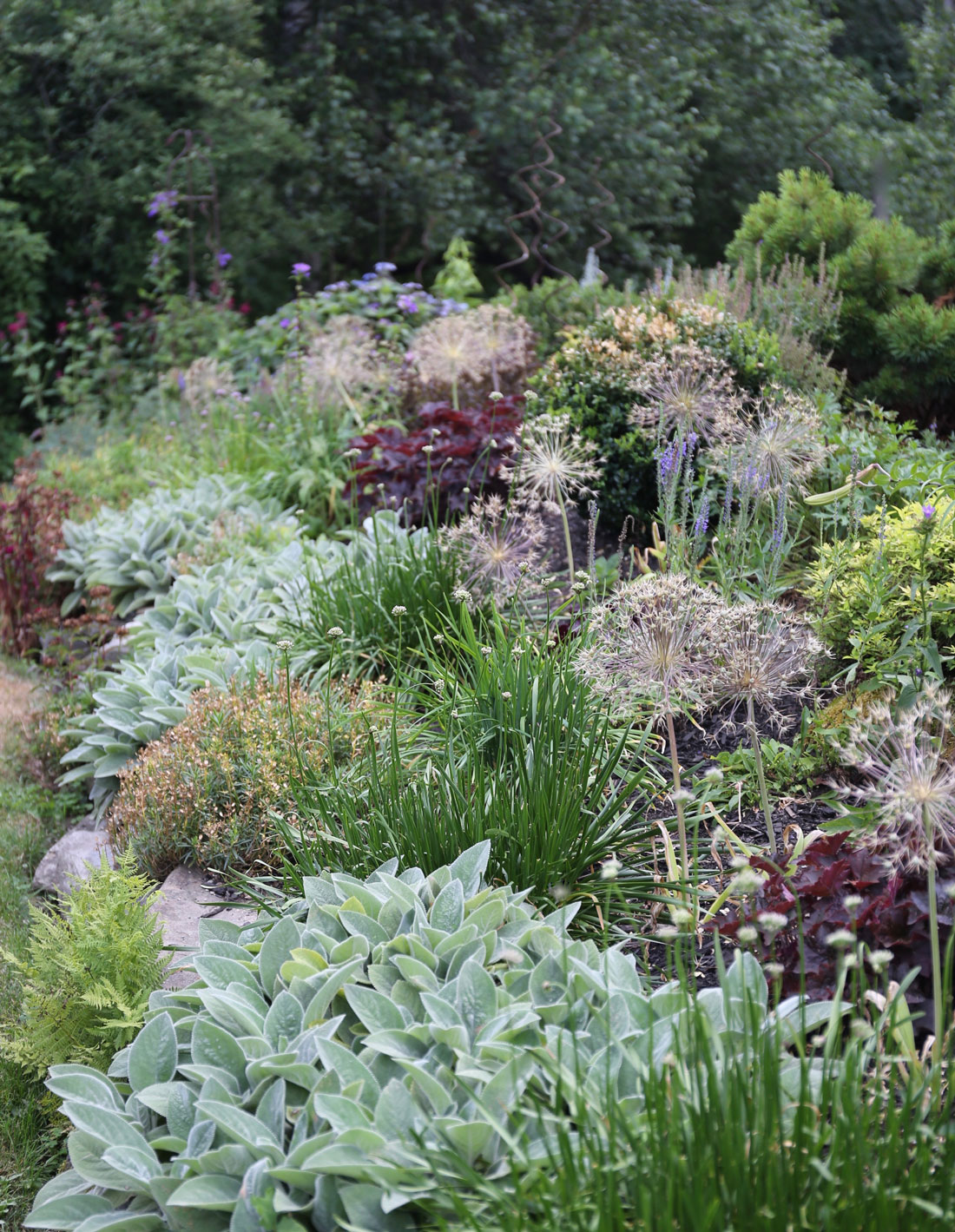
End of Season. By September, most plants have started to slow down. Eventually they will lose their green color and the foliage will turn yellow or brown. At this point you can cut ithe plants back to within 2 to 3” of the soil surface. Exceptions are ornamental grasses and flowers with seed heads that attract birds, such as echinacea and rudbeckia.
If you decide to relocate a perennial because it’s too tall, too short or just doesn't work where you have it, the best time for the move is fall or early spring when the plant is relatively dormant.
To learn more, you may be interested in reading: How to Prepare Soil for Planting, How and Why to Fertilize Your Plants, and 6 Tips for a More Colorful Flower Garden.
